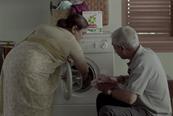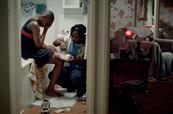

Brand
Procter & Gamble
"Touching lives, improving life."
-
Established
1837
-
Number of staff
110,000
-
Head office
Cincinnati, Ohio, US
-
Sector
FMCG
Vicks "Learning to love #TouchofCare" by Publicis Singapore
Pampers "Thank you midwife" by Saatchi & Saatchi London
Always "Keep going" by Leo Burnett
Black families confront the realities of systemic racism in somber P&G spot
Pampers "Little fighters" by Saatchi & Saatchi London
Milestones
About Procter & Gamble
Your father-in-law trying to get you to go into business with your brother-in-law, might sound like a situation that won’t end well. In 1837, these were the exact circumstances two men – William Procter and James Gamble – found themselves in. However, the resultant company – the eponymous Procter & Gamble – is still going strong today, 179 years later.
It started out as a family-driven soap and candle firm, but it grew quickly, with customers drawn to its promise to provide products and services that were better value and quality than competitors.
As the company website boasts, while P&G’s products and services may have changed unrecognisably over the years, the core purpose of the company has not wavered. It maintains a strong community focus, present from the outset, and epitomised by one of Gamble’s sons, who, in 1915, having taken over the reins at the company, created the first co-ordinated community campaign for charities, known now as The United Way.
Modern-day initiatives reflect this socially conscious ethic. Current examples include the partnership between nappy brand Pampers and Unicef to help prevent neonatal tetanus in the developing world, via funds from an on-pack promotion, and the ‘P&G Children’s Safe Drinking Water Program’ to distribute water-purification tablets where they are most needed.
Another P&G core value is innovation and, as a company, it has become synonymous with marketing ‘firsts’. It was, for instance, the first company (in 1924) to carry out door-to-door surveys among consumers, recognising early the value of data-driven market research and customer insight.
It was also the first brand to run national TV ads, in 1939, for its Ivory soap brand, complete with tagline ‘It floats!’ In a similar vein, its soap sponsorship of a radio drama (another first) led to the coining of the phrase ‘soap opera’.
In 1941, P&G was the first company to set up a ‘consumer relations’ department to deal with customer letters and queries, grasping the importance of keeping the customer at the heart of the proposition.
Encouraging further interaction, it added a Freephone number in 1973, an email in the 80s and, today, has 5.5m followers on Facebook.
The product portfolio has been stripped back in recent years to focus on 10 product categories and, within this, 65 brands. It also underwent a restructure of global operations in 1999 in a bid to streamline the business, a process that has continued since at a more gradual rate.
At one point, there were only two global business units but now there are four: beauty; fabric & home care; health & grooming; and baby, feminine & family care. P&G occupies pole position in seven of its categories and second place in the remaining three. Key brands include Always, Gillette, Max Factor, Pantene, Ariel, Pampers, Fairy and Lenor.
While the company continues to innovate around its products, it is also looking to differentiate itself using high-profile marketing campaigns linked to social issues. Examples include Always’ ‘#LikeAGirl’ and Ariel’s ‘#ShareTheLoad’, both of which aimed to tackle gender inequality and become part of the cultural and social conversation.
Recently about Procter & Gamble


BUSINESS DETAILS
1 P&G Plaza, Cincinnati, OH 45202, US
www.pg.co.uk
KEY PEOPLE
Marc S Pritchard, global marketing officer
Roisin Donnelly, brand director
Stephen Squire, global marketing director
Christine Truillet, vice-president, marketing
Jean-Paul Jansen, global brand director and e-business leader















